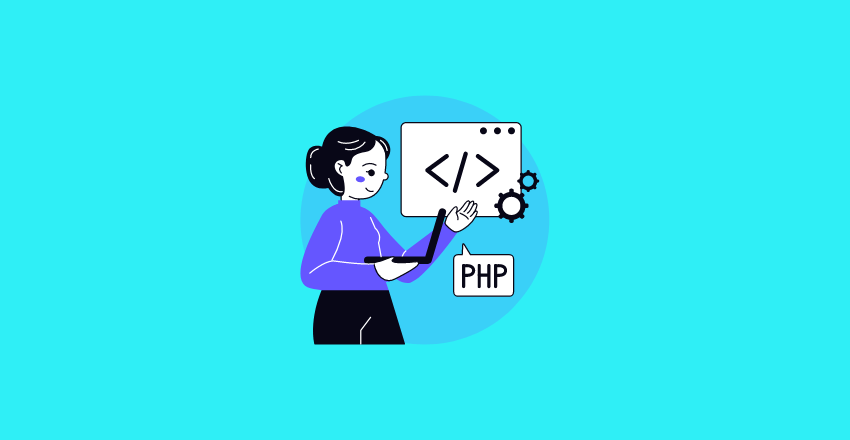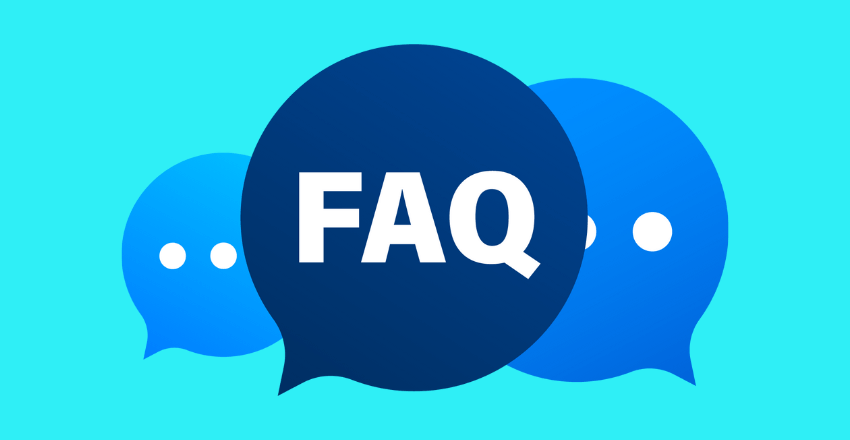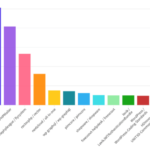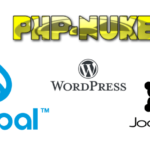Have you ever wondered, “What is a core PHP developer?” or “What is core PHP used for?” If so, you’re not alone. These are common questions in the world of web development, and today, we’re going to answer them in a way that even a third grader could understand!

What is PHP?
Before we dive into the specifics of a core PHP developer, let’s take a step back and understand PHP itself. PHP, which stands for Hypertext Preprocessor, is a popular general-purpose scripting language that powers everything from your blog to the most popular websites in the world. It’s like the magic wand that brings websites to life!
The Evolution of PHP
PHP always evolving, with new versions being released regularly. As of June 2023, PHP 8.2.6 is the latest version available. Each new version brings improvements and new features, making PHP even more powerful and versatile. A good PHP developer keeps up with these changes and adapts their skills accordingly.
What is Core PHP?
Now, you might be wondering, “Is PHP and core PHP the same?” Well, not exactly. Core PHP refers to the original PHP framework, without any additional libraries or frameworks. It’s like the basic building blocks of a LEGO set, while other versions of PHP are like the fancy LEGO sets with all the extra pieces and instructions.
The Power of Core PHP
Core PHP is the raw, unadulterated form of PHP. It’s the foundation, the bedrock upon which all other PHP frameworks and libraries are built. It’s the purest form of PHP, and it’s what a core PHP developer specializes in. They use this powerful tool to create dynamic web pages and applications from scratch.
What Does a Core PHP Developer Do?
A magician of sorts. They use the core PHP scripting language to create dynamic web pages and applications. They’re like the architects and builders of the internet, constructing everything from the ground up.
Levels of PHP Developers
Just like in a video game, there are different levels of PHP developers. These levels are typically categorized as beginner, intermediate, and advanced.
- Beginner: At this level, developers are just starting their journey. They’re learning the basics of PHP and starting to build simple web applications.
- Intermediate: Here, developers have a solid understanding of PHP and can build more complex applications. They might start exploring different PHP frameworks and libraries to enhance their development process.
- Advanced: At the advanced level, developers are PHP wizards. They can build complex, scalable web applications and are proficient in various PHP frameworks. They might also specialize in areas like security, testing, or performance optimization.
Core PHP vs. Advanced PHP
So, what’s the difference between core PHP and advanced PHP? Core PHP is the basic, raw form of PHP, while advanced PHP includes the use of frameworks, libraries, and advanced programming techniques. It’s like the difference between basic arithmetic and advanced calculus in math.
Addressing the Skepticism
Some people might be skeptical about PHP developers, perhaps due to misconceptions or outdated information. However, PHP is a powerful and versatile language that’s used by some of the biggest websites in the world, like Facebook and Wikipedia.
A skilled PHP developer can create efficient, secure, and scalable web applications that can handle millions of users.
What to Expect from a PHP Developer
A PHP developer should be able to write clean, efficient code that follows best practices. They should understand how to work with databases, handle user input, and ensure the security of the application.
They should also be able to work well in a team, communicate effectively, and keep up with the latest trends and technologies in web development.
Use Cases and Code Samples for Core PHP Developers

1. Building a Simple Contact Form
A simple contact form that sends an email when submitted. Here’s a basic example:
if ($_SERVER["REQUEST_METHOD"] == "POST") { $name = $_POST["name"]; $email = $_POST["email"]; $message = $_POST["message"]; $to = "contact@example.com"; $subject = "New Contact Form Submission"; $headers = "From: $email"; mail($to, $subject, $message, $headers); }This code checks if the form was submitted, then sends an email with the form data.
2. Creating a Simple Login System
A core PHP developer can create a simple login system using sessions. Here’s a basic example:
session_start(); if ($_SERVER["REQUEST_METHOD"] == "POST") { $username = $_POST["username"]; $password = $_POST["password"]; // This is just a simple example. In a real application, you would check the username and password against a database. if ($username == "admin" && $password == "password") { $_SESSION["loggedin"] = true; echo "You are now logged in!"; } else { echo "Invalid username or password!"; } }This code checks if the form was submitted, then checks the username and password. If they are correct, it sets a session variable to indicate that the user is logged in.
3. Building a Simple CRUD Application
A core PHP developer can create a simple CRUD (Create, Read, Update, Delete) application. Here’s a basic example of creating a new record in a database:
$servername = "localhost"; $username = "username"; $password = "password"; $dbname = "myDB"; $conn = new mysqli($servername, $username, $password, $dbname); if ($conn->connect_error) { die("Connection failed: " . $conn->connect_error); } $sql = "INSERT INTO MyGuests (firstname, lastname, email) VALUES ('John', 'Doe', 'john@example.com')"; if ($conn->query($sql) === TRUE) { echo "New record created successfully"; } else { echo "Error: " . $sql . "<br>" . $conn->error; } $conn->close();This code connects to a MySQL database, then inserts a new record into the “MyGuests” table.
4. Building a Simple REST API
A core PHP developer can create a simple REST API that returns JSON data. Here’s a basic example:
header("Content-Type: application/json"); $data = [ "name" => "John", "email" => "john@example.com" ]; echo json_encode($data);This code sets the Content-Type header to “application/json”, then echoes out some JSON data.
5. Creating a Simple Pagination System
A core PHP developer can create a simple pagination system for displaying data from a database. Here’s a basic example:
$servername = "localhost";
$username = "username";
$password = "password";
$dbname = "myDB";
$conn = new mysqli($servername, $username, $password, $dbname);
$records_per_page = 10;
$page = isset($_GET['page']) && is_numeric($_GET['page']) ? $_GET['page'] : 1;
$start = ($page-1) * $records_per_page;
$sql = "SELECT * FROM MyGuests LIMIT $start, $records_per_page";
$result = $conn->query($sql);
while($row = $result->fetch_assoc()) {
echo "id: " . $row["id"]. " - Name: " . $row["firstname"]. " " . $row["lastname"]. "<br>";
}
This code connects to a MySQL database, then retrieves a page of records from the “MyGuests” table.
6. Implementing a Simple Image Upload System
A core PHP developer can create a simple image upload system. Here’s a basic example:
if ($_FILES['image']['error'] == UPLOAD_ERR_OK) { $tmp_name = $_FILES['image']['tmp_name']; $name = $_FILES['image']['name']; move_uploaded_file($tmp_name, "uploads/$name"); echo "Image uploaded successfully!"; } else { echo "Image upload failed!"; }This code checks if the image upload was successful, then moves the uploaded image to the “uploads” directory.
7. Creating a Simple RSS Feed
A core PHP developer can create a simple RSS feed. Here’s a basic example:
header("Content-Type: application/rss+xml; charset=ISO-8859-1"); $rssfeed = '<?xml version="1.0" encoding="ISO-8859-1"?>'; $rssfeed .= '<rss version="2.0">'; $rssfeed .= '<channel>'; $rssfeed .= '<title>My RSS feed</title>'; $rssfeed .= '<link>http://www.example.com</link>'; $rssfeed .= '<description>This is an example RSS feed</description>'; $rssfeed .= '<item>'; $rssfeed .= '<title>Example item</title>'; $rssfeed .= '<description>This is an example item</description>'; $rssfeed .= '<link>http://www.example.com/example-item</link>'; $rssfeed .= '</item>'; $rssfeed .= '</channel>'; $rssfeed .= '</rss>'; echo $rssfeed;This code sets the Content-Type header to “application/rss+xml”, then echoes out some RSS feed data.
FAQs About Core PHP Developers

1. Can a Core PHP Developer Work with PHP Frameworks?
Absolutely! A core PHP developer is well-versed in the foundational aspects of PHP, which are crucial for understanding and working with PHP frameworks. Here’s a simple example of how a core PHP developer might use the Laravel framework to create a new route:
Route::get('/welcome', function () { return 'Welcome to our website!'; });2. How Does a Core PHP Developer Handle Errors?
Error handling is a key skill for any developer. In PHP, this can be done using functions like set_error_handler(). Here’s an example:
function customError($errno, $errstr) { echo "<b>Error:</b> [$errno] $errstr"; } set_error_handler("customError"); echo($test);In this code, we define a custom error function and then set it as the error handler. When we try to echo an undefined variable ($test), our custom error function is triggered.
3. How Can a Core PHP Developer Improve Performance?
There are many ways to improve PHP performance, such as using opcode caches like OPcache. This can significantly speed up PHP by storing precompiled script bytecode in shared memory. Here’s how to check if OPcache is enabled:
if(function_exists('opcache_get_configuration')) { $opcache_config = opcache_get_configuration(); if($opcache_config['directives']['opcache.enable']) { echo 'OPcache is enabled!'; } else { echo 'OPcache is disabled!'; } } else { echo 'OPcache extension is not available!'; }4. What Security Measures Does a Core PHP Developer Implement?
Security is paramount in web development. Core PHP developers use various techniques to secure their applications, such as data sanitization to prevent SQL injection attacks. Here’s an example using prepared statements with PDO:
$stmt = $pdo->prepare('SELECT * FROM users WHERE email = :email'); $stmt->execute(['email' => $email]); $user = $stmt->fetch();In this code, user input ($email) is never directly included in the SQL query, preventing SQL injection.
5. How Does a Core PHP Developer Work with APIs?
Working with APIs is a common task for PHP developers. Here’s an example of how a core PHP developer might use the file_get_contents() function to send a GET request to an API:
$response = file_get_contents('https://api.example.com/data'); $data = json_decode($response, true);In this code, we send a GET request to https://api.example.com/data, then decode the JSON response into an associative array.
6. How does a Core PHP Developer use Object-Oriented Programming (OOP)?
Object-Oriented Programming is a programming paradigm that is based on the concept of “objects”. A core PHP developer often uses OOP to organize their code in a more manageable and scalable way. Here’s a simple example of a class in PHP:
class Car { public $color; public function __construct($color) { $this->color = $color; } public function getColor() { return $this->color; } } $myCar = new Car("red"); echo $myCar->getColor(); // Outputs: red7. How does a Core PHP Developer handle file uploads?
Handling file uploads is a common task in web development. Here’s how a core PHP developer might handle a file upload:
if ($_FILES['file']['error'] == UPLOAD_ERR_OK) { $tmp_name = $_FILES['file']['tmp_name']; $name = $_FILES['file']['name']; move_uploaded_file($tmp_name, "uploads/$name"); } else { echo "File upload failed!"; }This code checks if the file upload was successful, then moves the uploaded file to the “uploads” directory.
8. How does a Core PHP Developer use cookies and sessions?
Cookies and sessions are used to store information about the user across multiple pages. Here’s an example of setting a cookie and starting a session in PHP:
setcookie("username", "John", time() + (86400 * 30), "/"); // 86400 = 1 day session_start(); $_SESSION["username"] = "John";9. How does a Core PHP Developer send emails?
PHP has a built-in mail() function that can be used to send emails. Here’s a simple example:
$to = "someone@example.com"; $subject = "Hello!"; $message = "Hello, how are you today?"; $headers = "From: webmaster@example.com"; mail($to, $subject, $message, $headers);10. How does a Core PHP Developer connect to a database?
Connecting to a database is a crucial skill for any PHP developer. Here’s an example of connecting to a MySQL database using PDO:
$servername = "localhost"; $username = "username"; $password = "password"; try { $conn = new PDO("mysql:host=$servername;dbname=myDB", $username, $password); echo "Connected successfully"; } catch(PDOException $e) { echo "Connection failed: " . $e->getMessage(); }Remember, these are just examples. The specifics will depend on the project requirements, the developer’s preferences, and the best practices in the PHP community.
Wrapping Up
So, there you have it! Now you know what a core PHP developer is, what they do, and what to expect from them. Whether you’re looking to hire a PHP developer, considering learning PHP yourself, or just curious about web development, we hope this post has been helpful and informative.
Remember, the world of web development is vast and ever-changing, so there’s always more to learn. So, why not dive in and explore more about PHP and web development?
Ashley is an esteemed technical author specializing in scientific computer science. With a distinguished background as a developer and team manager at Deloit and Cognizant Group, they have showcased exceptional leadership skills and technical expertise in delivering successful projects.
As a technical author, Ashley remains committed to staying at the forefront of emerging technologies and driving innovation in scientific computer science. Their expertise in PHP web development, coupled with their experience as a developer and team manager, positions them as a valuable resource for professionals seeking guidance and best practices. With each publication, Ashley strives to empower readers, inspire creativity, and propel the field of scientific computer science forward.







